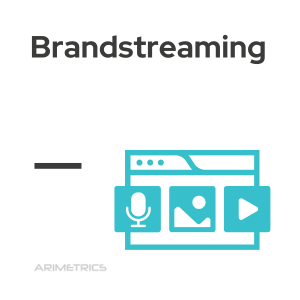 Definition
Definition
Brandstreaming is a marketing strategy that involves creating relevant and engaging content to engage consumers and build a meaningful connection with them. It is a highly effective technique for increasing a brand’s visibility and fostering customer loyalty.
The key to successful brandstreaming is the ability to focus on the interests and needs of the target audience, creating content that resonates with them and is useful to them. The contents can be blog articles, infographics, videos, podcasts, social networks, e-books, among others.
Benefits of Brandstreaming
Among the advantages of Brainstrimig we can mention:
- Increase brand visibility: By creating engaging and relevant content, brands can increase their visibility online, allowing them to reach a wider audience and generate more interaction with their potential customers.
- Improves brand credibility: Brandstreaming allows brands to establish themselves as thought leaders in their industry, which increases their credibility and allows them to be seen as an authority in their field.
- Foster customer loyalty: When consumers feel connected to a brand, they are more likely to continue interacting with it and buying its products or services. Through brandstreaming, brands can foster customer loyalty, which in turn saves them time and money on customer acquisition.
- Branding: It helps brands position themselves in the minds of their customers, which means they are more likely to be remembered and recommended to others. This can be especially beneficial for businesses that are just starting to build their brand and want to have a lasting impact on their audience.
- Differentiation from the competition: Creating engaging and relevant content allows brands to differentiate themselves from their competitors and stand out in a saturated market. When consumers perceive that a brand cares about their well-being and offers them valuable information, they are more likely to choose that brand over other options.
Examples of Brandstreaming
Some examples of how some brands have used Brandstreaming:
- Red Bull: The brand has managed to create exciting and exciting content that engages its audience and reinforces its values of adventure and adrenaline. The company sponsors and broadcasts extreme sporting events, such as Red Bull Cliff Diving, where the best divers in the world jump from cliffs more than 20 meters high. Content generated by viewers, who share their videos and photos of the events on social media, also helps spread the brand and increase its visibility.
- Dove: Dove’s “Real Beauty” campaign has been one of the most successful in marketing history. The brand has created content that sends a positive message to women, promoting natural beauty and self-acceptance rather than the unattainable standards of the fashion and beauty industry. TV ads, social media posts, and YouTube videos have been widely shared and discussed on media outlets and blogs, which has increased brand visibility and acceptance.
- Airbnb: The vacation rental platform has used a very effective content strategy to establish itself as a leader in its sector. The brand has created travel guides, tips and recommendations for its users, which help them plan and enjoy their vacation. In addition, Airbnb has promoted community and interaction between its hosts and guests, creating a large fan base and brand advocates.
These examples demonstrate how brandstreaming can be a powerful tool to build emotional connection with customers, increase brand visibility and improve your reputation in the market. By creating relevant and engaging content, companies can differentiate themselves in a saturated market and establish themselves as thought leaders in their industry.
